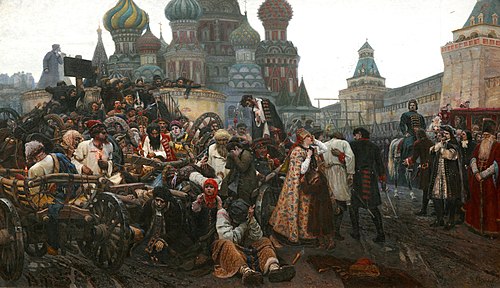This article has multiple issues. Please help improve it or discuss these issues on the talk page . (Learn how and when to remove these messages)
|
| The Morning of the Streltsy Execution | |
|---|---|
 Morning of the Streltsy Execution | |
| Artist | Vasily Surikov |
| Year | 1881 |
| Dimensions | 218 cm× 379 cm(86 in× 149 in) |
| Location | Tretyakov Gallery, Moscow |
The Morning of the Streltsy Execution is a painting by Vasily Ivanovich Surikov, painted in 1881. It illustrates the public execution after the Streltsy's failed attempted uprising before the walls of the Kremlin. It shows the display of power the Russian government had during the late years of the 17th century. [1]
The painting can be found at the Tretyakov Gallery in Moscow.